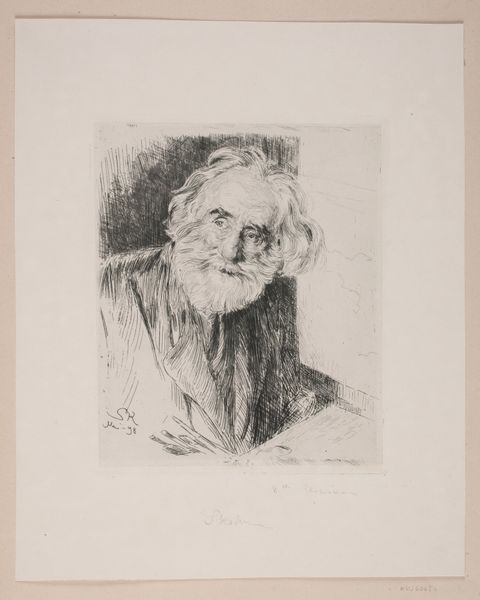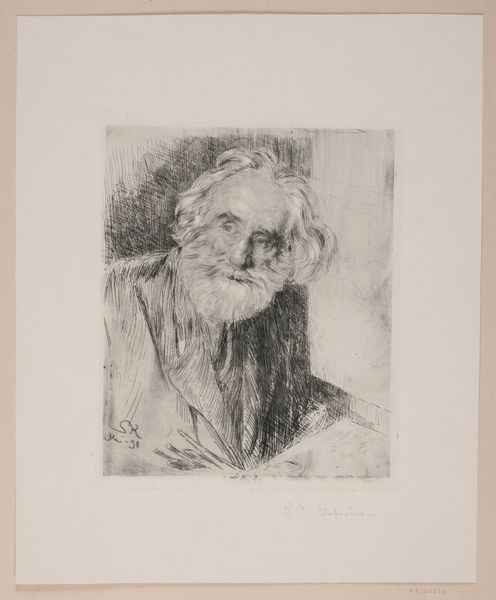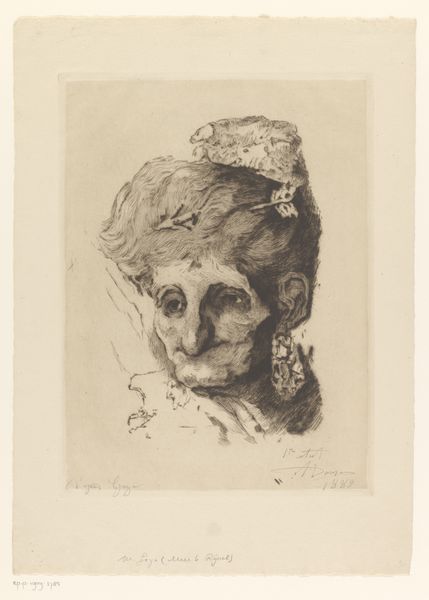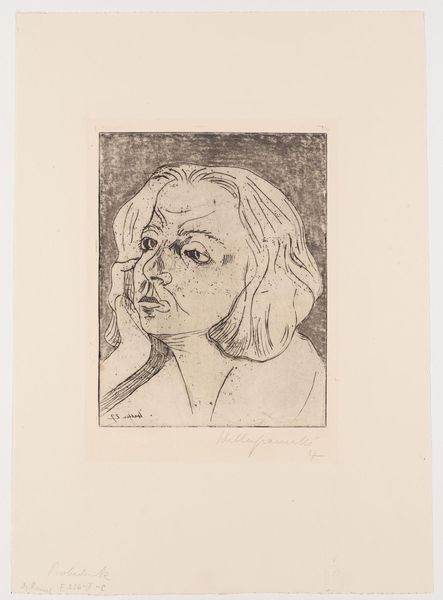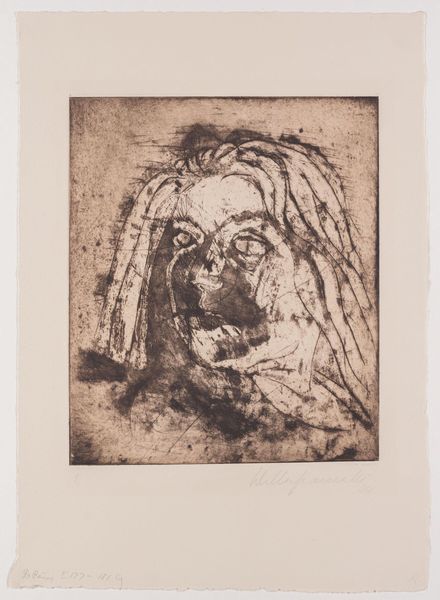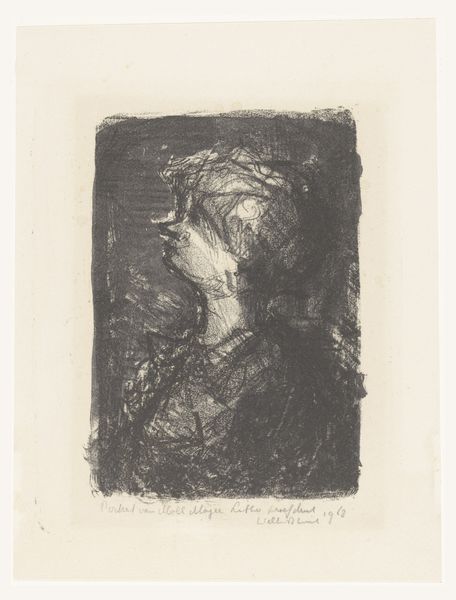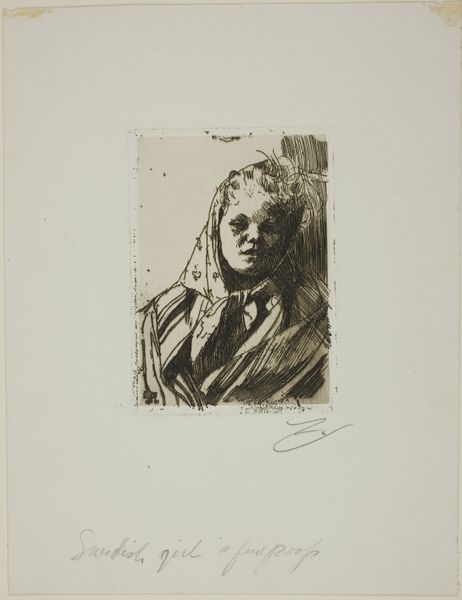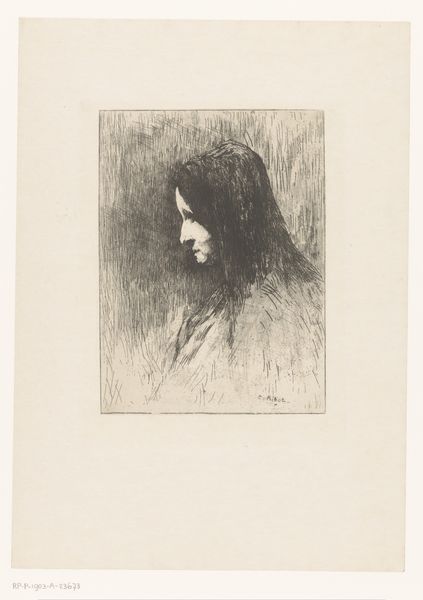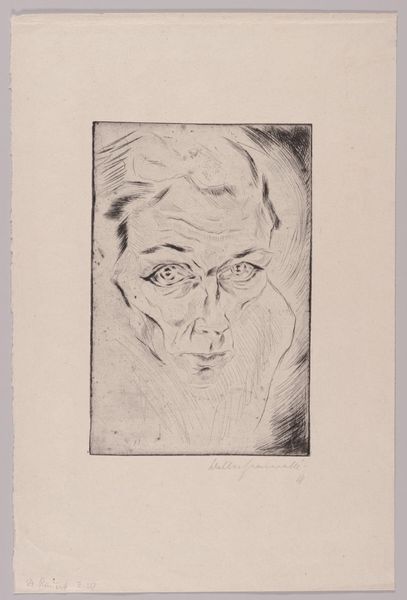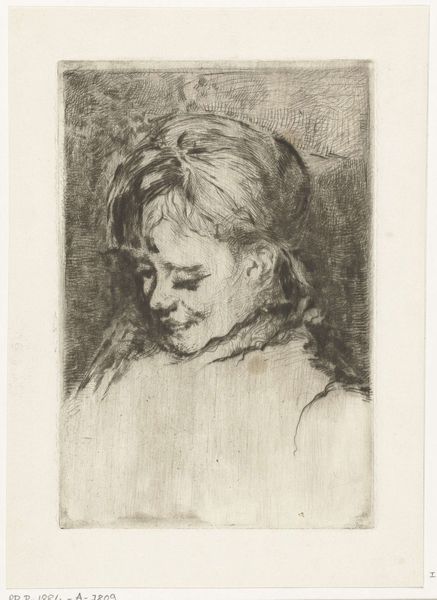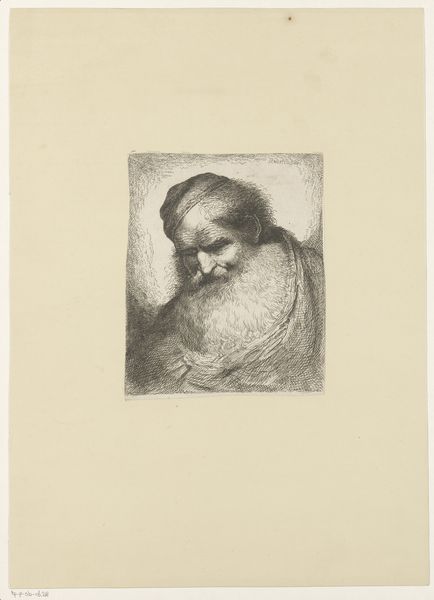
print, etching
#
portrait
# print
#
etching
#
realism
Dimensions: 215 mm (height) x 179 mm (width) (plademaal)
Editor: So this is P.S. Krøyer’s "Portrait of Vilhelm Kyhn" from 1898, created with etching. I’m struck by how informal it feels for a portrait –almost like a quick sketch capturing a fleeting moment. What symbols or meanings do you see embedded in this image? Curator: The flowing lines and the medium of etching itself give it that ephemeral quality you noticed, almost as if the image is emerging from memory. Kyhn, as portrayed here, becomes an archetype of the elder artist, the pens in his hand suggesting not just his profession, but the act of creation itself. Consider the cultural weight of beards at the time – signs of wisdom and experience. Editor: So the beard is a conscious signifier? Like a visual shortcut to portray him as wise and experienced? Curator: Precisely. The loose, almost wild strokes forming his hair and beard could also suggest a Romantic ideal of artistic genius. And notice how the lines around his eyes convey a deep sense of thought. Do you think there’s a contrast intended between his internal world and his external presentation? Editor: I hadn't thought about it like that. The contrast between the detailed face and the sketchier background does make you focus on his expression, his inner life. It's like Krøyer is showing us not just Kyhn's appearance, but his very essence. Curator: Yes, it invites us to contemplate the essence of artistic identity itself – how artists see themselves and how they are seen by others. Krøyer uses established visual codes – the beard, the pens, the gaze – to tap into a collective understanding of what it means to be an artist. Editor: That's fascinating, seeing how Krøyer used those visual shorthands. It makes me think differently about portraiture. Curator: Indeed. Etchings like this often compress complex cultural understandings into relatively simple forms. We can carry this way of seeing into our observation of art and culture generally.
Comments
No comments
Be the first to comment and join the conversation on the ultimate creative platform.
